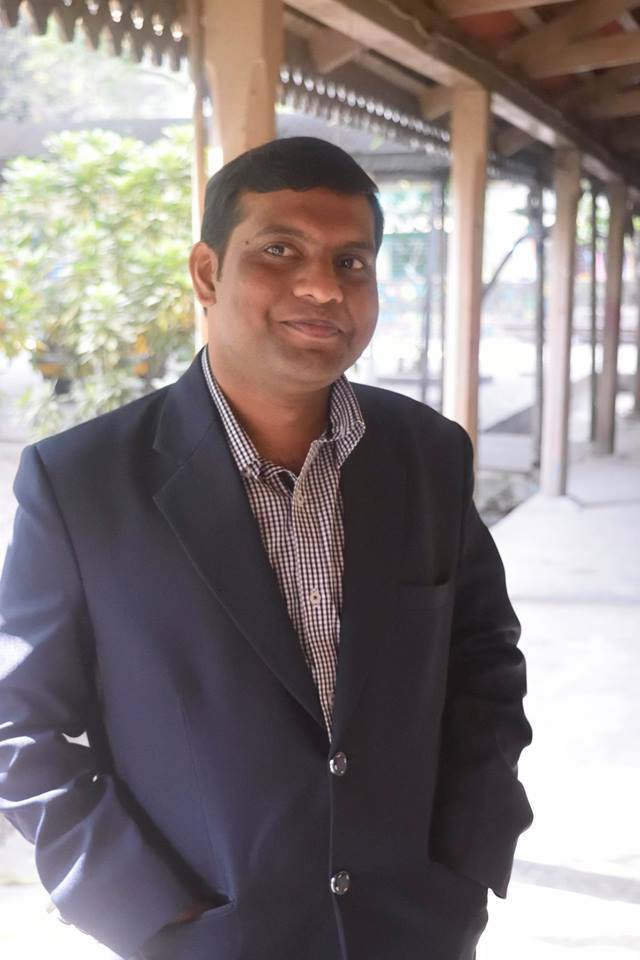Amit Kumar
 Indian TV news media fully drenched with orgasmic nationalism seems hell bent on demonizing the alleged rioters in the form of large crowds who call themselves Amedkarites, the followers of Ambedkar, on the roads of various cities in Maharashtra especially Mumbai. The genuine question is: “Are the followers of Ambedkar following Ambedkar?” Ambedkar the chief draftsman of Indian Constitution is a mystical figure for the so-called mainstream of Indian citizenry and arouses a deep feeling of ambivalence if not that of abhorrence in those who, paradoxically, happen to enjoy the protection of the Constitution. Ambedkar happens to be one of the most misunderstood leaders of the Indian Freedom Struggle.
Indian TV news media fully drenched with orgasmic nationalism seems hell bent on demonizing the alleged rioters in the form of large crowds who call themselves Amedkarites, the followers of Ambedkar, on the roads of various cities in Maharashtra especially Mumbai. The genuine question is: “Are the followers of Ambedkar following Ambedkar?” Ambedkar the chief draftsman of Indian Constitution is a mystical figure for the so-called mainstream of Indian citizenry and arouses a deep feeling of ambivalence if not that of abhorrence in those who, paradoxically, happen to enjoy the protection of the Constitution. Ambedkar happens to be one of the most misunderstood leaders of the Indian Freedom Struggle.
Gandhi and Ambedkar are often compared on various counts; however, the use of peaceful means is almost exclusively ascribed to Gandhi and his followers while Ambedkar is very rarely if ever mentioned for his use of non-violence. Let us try to understand what Ambedkar would have thought of the Koregaon incident and his action thereon. But let’s first have a very brief introduction of Ambedkar’s actions and views on similar issues.
Lessons from Ambedkar himself
To start with it is pertinent to mention the practical approach Ambedkar took in his righteous fight in the form of various movements against inhuman caste oppression, be it the satyagraha in Mahad to fight for the right of the untouchable community to draw water from water pond or the Kalaram Temple movement was completely non-violent in spite of the attacks that caste Hindus/Brahminists launched on the participants in the peaceful movements without Ambedkar resorting to counteractions in the form of violence. He rather took the path of legal and Constitutional recourse.
In this context, Ambedkar’s visionary advice in his concluding speech in the final meeting of the constituent assembly is worthwhile to remember where he said that ‘UNCONSTITUTIONAL MEANS’ must be abandoned as soon as possible. He went on to call these means nothing but the “Grammar of Anarchy”. The question pertinent here to ask is,”Was the Ambedkarites’ action in the wake of Koregaon incident a form of ‘grammar of anarchy’ as also indicated by the TV Media?”
The Action
Let’s now bring in Koregaon incident wherein reports suggests that a group which feels oppressed and battered for centuries gathered at Bhima-Koregaon to commemorate what it considers an important event in its obliterated history against caste slavery. Perhaps thus it seeks to gather confidence, courage, and direction for continuing the struggle in the form of socio-political mobilisation for change against the ubiquitous caste based disadvantages, discrimination and violence.
This event, inter alia speculations of a political design of Maratha polarisation for political mileage, seems to have enraged the right wing which feels emboldened ever since the new Government has reached the political helm. During the event, a group carrying saffron flags and raising right-wing slogans attacked the people going towards Koregaon to attend the event or returning from the same wherein some people were injured with a confirmed death.
The Counteraction & Question
It is in this wake that the Dalit leaders decided to call for bandh and took to the streets and indulged in alleged vandalism. Now the moot question is how far are the unconstitutional acts of Ambedkarites justified against which Ambedkar himself argued so passionately? Do Ambedkar’s views leave any room or sanction for the use of any unconstitutional method?
The Justification
In the much talked about ‘Grammar of Anarchy’ speech by Ambedkar there was a red herring, wherein he conditioned that the unconstitutional means can have no justification as long as CONSTITUTIONAL MEANS ARE AVAILABLE. So, the first question to be asked is if the constitutional methods were denied.

The speediest and logical constitutional method should have been the administration and the government doing their duties by taking appropriate actions against the perpetrators of the clear nuisance created by Saffron clad goons. However, the inability or the reluctance of the government and the plastic-frame (Puppet) administration to foresee the alleged planned attacks and provide commensurate security arrangements before the event and the blatant shamelessness to take action against the culprits rather booking the young dalit MLA Jignesh Mevani in the aftermaths of the Koregaon violence, coupled with the earlier experiences of cover ups and even saving the culprits of violence, vigilantism and mob lynchings by the right wing extremists in various cases like Rohit, Akhlak, Gori Lankesh, Najeeb etc., has left one with delusional hopes only.
The biggest platform for constitutional resistance is the parliament itself. But the binary of overwhelming majority of BJP in Lok Sabha, and the discredited opposition ending up ineffectual in bringing up any of unheard voices has left the constitutional platform of the Parliament as inaccessible, thereby shutting the biggest constitutional doors effectively.
And even if the actions of some senior judges are overlooked as bad apples, the dilatory judiciary of which effectiveness depends on the investigative agencies which are more than parrots for the political executive leaves hopes sinking.
Media the so-called fourth pillar of democracy has fallen into the hands of corporates milking it for favourable gains in the form of favourable policies from government, government advertisements, quid pro quo in the form of political patronage and even parliamentary seats in the upper house of the parliament. Thus avoiding action against themselves etc. Moreover, this phrase of ‘Godi media’ has been proven correct even in reporting of the Koregaon incident where the media failed to take even a slightest of the notice of the attacks by caste Hindus on the Dalits.
Thus there is a fit case of failure of constitutional methods to deliver effectively the constitutionally guaranteed justice. This begs the second question what may be the means left now “unconstitutional methods”. But unconstitutional means may include a wide range of activities such as Gandhian Satyagrahi method of observing fast to force the action, use of violence etc.. Did Ambedkar suggest anything through his life and his message?
Ambedkar himself led several non-violent protests against the oppressive system along with his legal fight. Moreover, peaceful association and demanding constitutionally enshrined rights through peaceful gathering and protests against the oppressive system in no way extra-constitutional in so far as the constitutional authorities fail to act their mandated duties.
Until this point there seem to be no paradoxes in the Ambedkar’s approach and the current protests of Ambedkarites and Dalits in the wake of Koregaon attacks, however, there are certain grey areas in the use of vandalism of public goods and violence (though the writer did not come across any untoward incident where anyone was reported injured due to the counter-action of Dalits).
Ambedkar understood through his own experiences that it is the weaker sections who suffer the most due to violence. Hence, Ambedkar did not seem to support violence in any form clearly, but it is in the nature of man that he must protect himself against violence. This was also suggested by Gandhi in case of self-defence and the same is also the part of the modern jurisprudence. But the use of violence even for self-defence is a subjective worm-can and must be used discreetly as a last resort for self-defence only.
In the end, we all must remember that in the final speech in the Constituent Assembly Ambedkar also warned that if political democracy does not transform into social and economic democracy then those who suffer from inequality will blow up the structure of political democracy. We all must, therefore, pray that situations must not reach the proportions where the sufferers cross all the thresholds of their tolerance.
~~~
Amit Kumar is a budding Freelancer, Dalit Thinker and a Social Media Activist.










